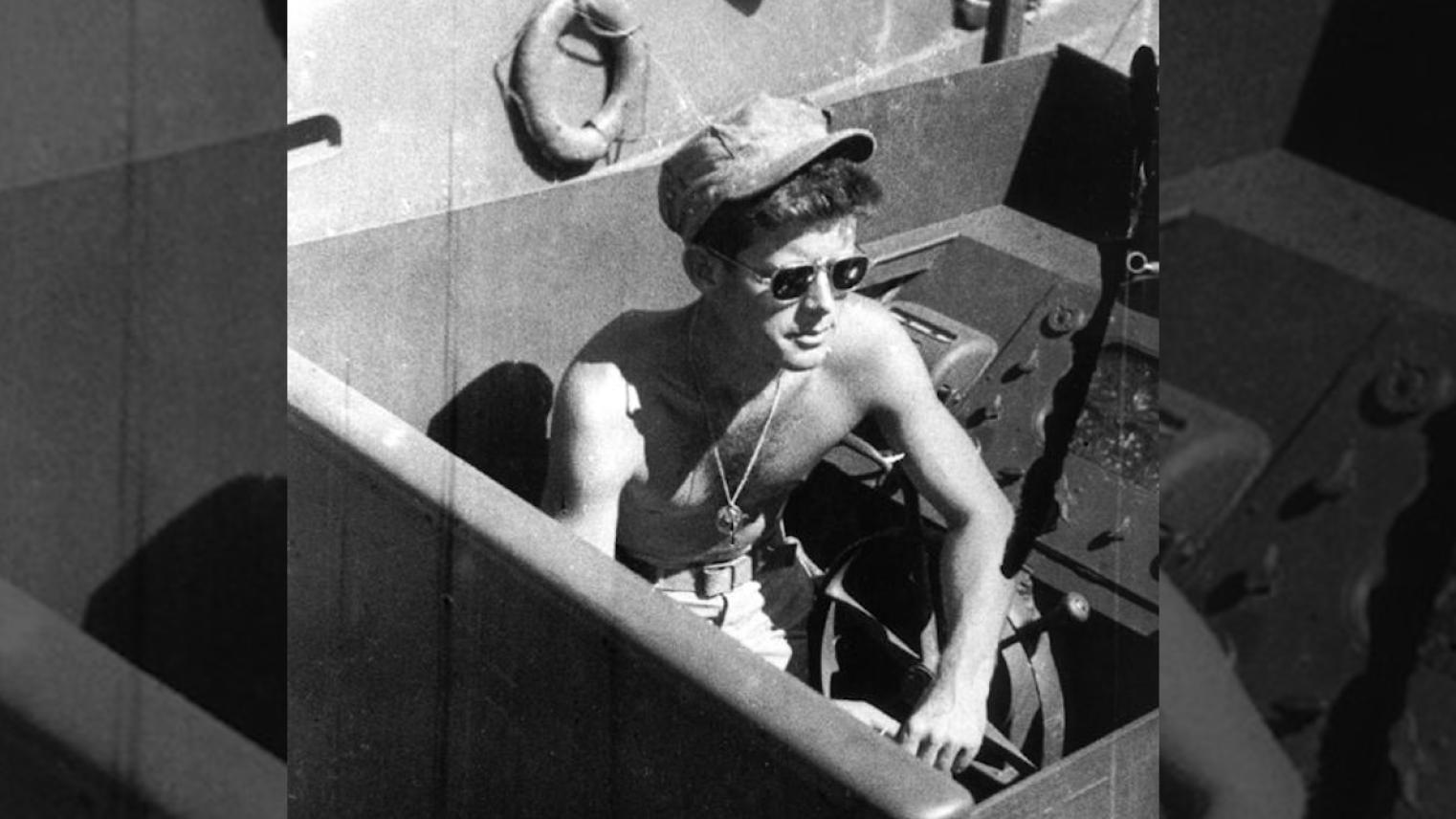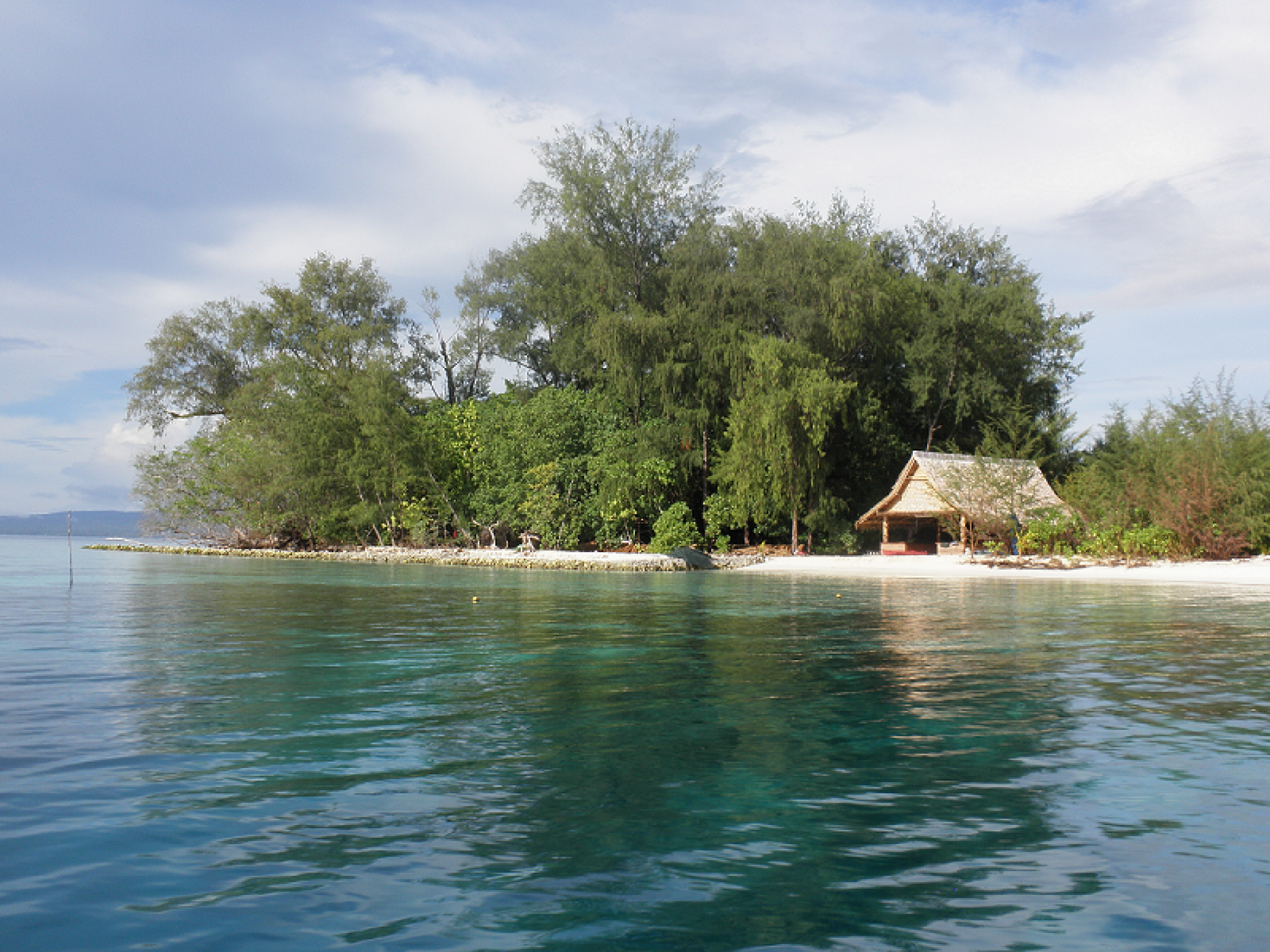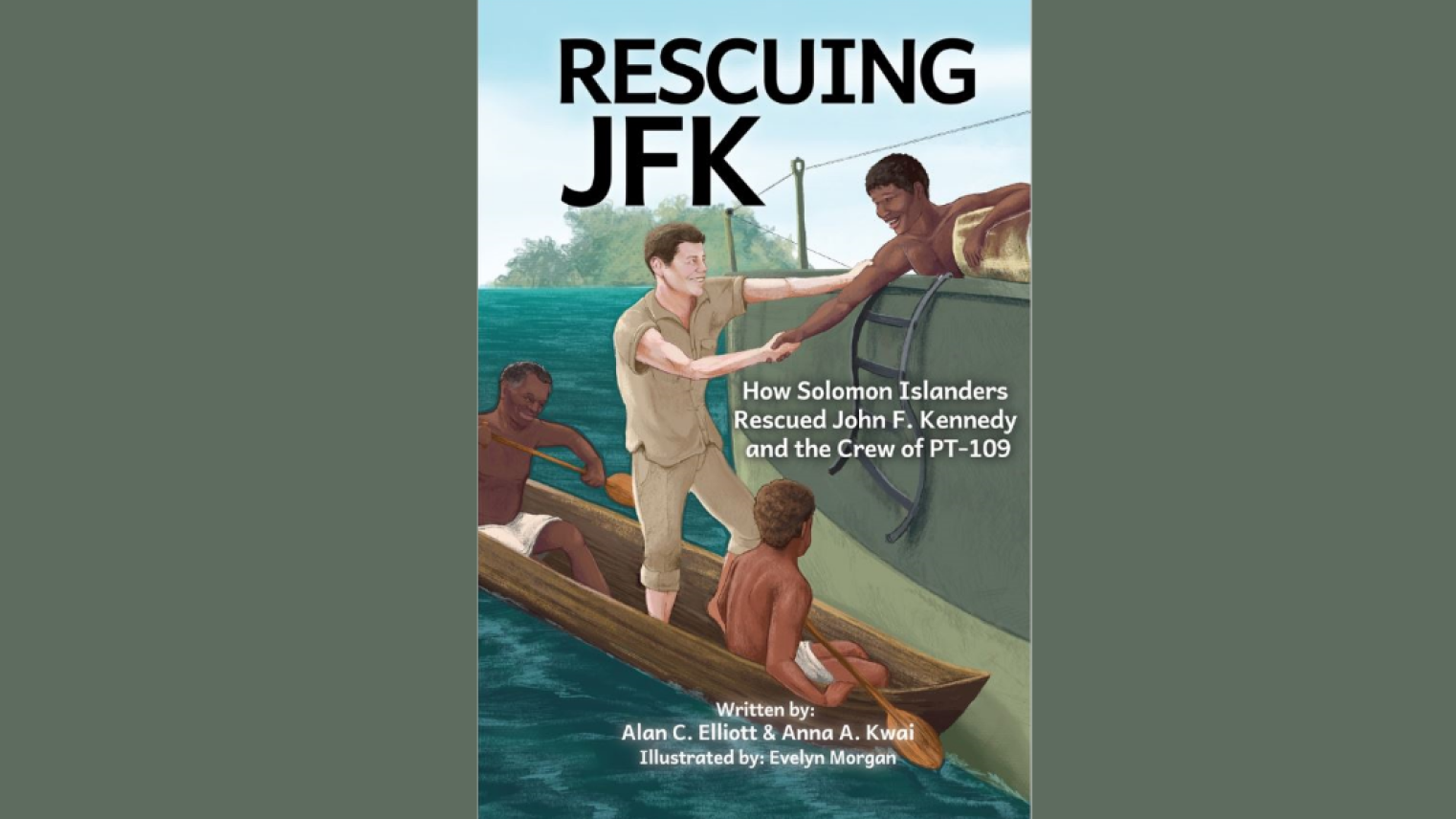A Starless Night
The date was 2 August 1943. US Navy Lieutenant John F. Kennedy and his crew patrolled the waters of Blackett Strait in the mid-Solomon Islands in his Patrol Torpedo boat PT-109, as was their usual duty. It was an ominously dark night devoid of moonlight or stars. Suddenly, the much larger Japanese destroyer Amagiri rode down the boat, splitting it in two, killing two crew members and injuring Lt. Kennedy and another crew member.
The story goes that the 11 surviving crew swam to a small, unoccupied island, with Kennedy holding the strap of his injured crewmate’s lifejacket between his teeth, towing him while he swam roughly three-and-a-half miles to the island.
The crew hid on this deserted island for several days, living on coconuts and rainwater till they could eventually swim to find a bigger island, where they went foraging for food and water.
This is how they met two Solomon Islanders in a dugout canoe. Scouts Biuku Gasa and Eroni Kumana worked with the Coastwatchers, a network of agents based behind enemy lines across the Pacific islands during WWII. Their job was to keep an eye on enemy activity and report this back to Allied forces.
Few historical accounts focus on the role that Gasa and Kumana played in the rescue of JFK and his crew. They risked their lives out at sea—paddling through Japanese-patrolled waters—to transport Kennedy’s message back to the US base to organise a rescue, a message which he had carved onto a coconut husk—the one he later kept as a memento on his desk.
The Solomon Story
The story of JFK’s heroism is well-known globally, but few know about what happened from this Indigenous perspective, given how little is recorded in books or historical documents. Young Solomon Islanders often do not have the opportunity to learn about their own history. Anna Kwai, a Solomon Islander historian and a PhD candidate at the ANU School of Culture, History & Language (CHL) says this was a subject she had to wait until she was at a foreign university to learn about, one that really should get to the local population through schools.
“Not a lot has changed since I was in high school. There’s little Solomon Islands history, as if there’s no Solomon Islands history at all.”
Yet, the role of Solomon Islanders was a lot more significant than records show. Annie herself has seen and studied reports that indicate the breadth and depth of the kind of intelligence that Solomon Islander scouts provided to the US. They also contributed through rescue missions and providing medical aid and food to injured Allied soldiers.
The Solomon Islands are relevant not just to US history but also to Australian history. According to Anna, the Coastwatching network was an intelligence arm of the Royal Australian Navy. After World War I, Australia realised that the Island chain comprising Solomon Islands, Papua New Guinea and Vanuatu formed was ‘wall’ that could safeguard Australia from attack, and this realisation and its significance truly kicked in during WWII.
![PC 96 Tulagi, Solomon Islands. PT Boat Officers (L-R) James ("Jim") Reed, John F. ("Jack") Kennedy, George ("Barney") Ross [rear], and Paul ("Red") Fay PC 96 Tulagi, Solomon Islands. PT Boat Officers (L-R) James ("Jim") Reed, John F. ("Jack") Kennedy, George ("Barney") Ross [rear], and Paul ("Red") Fay](/sites/default/files/styles/hero/public/2023-05/JFK_and_PC_96_Officers_0.jpg?itok=Tu2Wu-_z)



